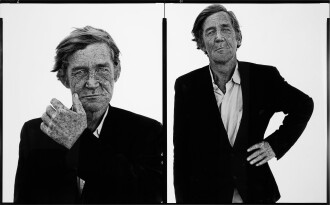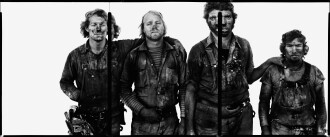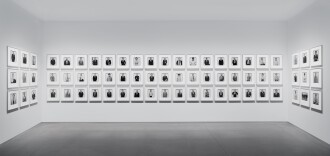Works by Richard Avedon at Sotheby's
Richard Avedon Biography
One of the most influential photographers of the 20th century, Richard Avedon revolutionized the worlds of fashion and fine art portraiture. With his dynamic approach to fashion photography, Avedon brought life, immediacy and dazzling fantasy to the glossy pages of Vogue and Harper’s Bazaar. Beyond the world of high fashion, Avedon trained his eye on a wide array of subjects, ranging from celebrities and political figures to everyday Americans and people living on the fringes of society. His portraits, sometimes provocative and always psychologically probing, reveal the complicated humanity of his sitters, including iconic figures like Marylin Monroe, Andy Warhol, Dwight D. Eisenhower and Audrey Hepburn. In his New York Times obituary, Avedon was lauded as “the Eye of Fashion,” whose iconic photographs “helped define America’s image of style, beauty and culture for the last half-century.” His innovative body of work paved the way for a diverse host of photographers including Diane Arbus, Nan Goldin, Herb Ritts and Annie Liebovitz.
Avedon was born in 1923 in New York City. He served in the US Merchant Marines from 1942 to 1944, where he learned photography by taking thousands of identification portraits of crewmen. Upon his return to New York, Avedon studied under Alexey Brodovitch, the acclaimed art director of Harper’s Bazaar, in his Design Laboratory at the New School for Social Research. Under Brodovitch’s mentorship, Avedon joined the staff of Bazaar, and received increasingly high profile assignments. In 1955, while covering the Paris runway shows, he captured the iconic Dovima with Elephants, in which the Dior-clad fashion model’s elegant pose and radiant beauty is juxtaposed with the mournful and wrinkled elephants of the Cirque d’Hiver.
Avedon published his first photography book, Observations, in 1959, with commentary by Truman Capote. His second publication, Nothing Personal (1964), featuring portraits of civil rights demonstrators, mental patients, Vietnam War protestors and soldiers, was accompanied by text from his high school friend James Baldwin. In the mid-‘60s, Avedon left Harper’s Bazaar to work at Vogue, where he continued to shoot for over 20 years.
In 1985, Avedon’s In the American West was published in conjunction with a traveling exhibition organized by the Amon Carter Museum in Fort Worth. The series includes portraits of some 762 individuals—drifters, miners, ranchers, bar girls and gamblers—and is considered by some to be Avedon’s magnum opus. In 1992, Avedon became the first staff photographer for The New Yorker, and transformed the publication with his resonant and insightful portraits. Avedon died in 2004 at the age of 81 in San Antonio, Texas, whilst on assignment for The New Yorker.
During his lifetime, Avedon was the recipient of numerous awards and honors, including a Lifetime Achievement Award from the Council of Fashion Designers of America (1989), the International Center of Photography’s Master of Photography Award (1993) and the Royal Photographic Society’s 150th Anniversary Medal (2003). His photographs are held in the public collections of the Museum of Modern Art and Metropolitan Museum of Art, New York, the Smithsonian’s National Museum of American History, Washington DC, the Art Institute of Chicago, the Centre Georges Pompidou, Paris, Fotomuseum Winterthur in Switzerland, and the Victoria and Albert Museum, London.












